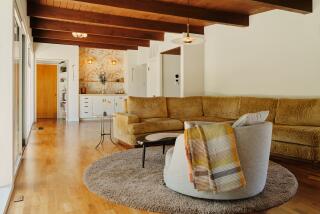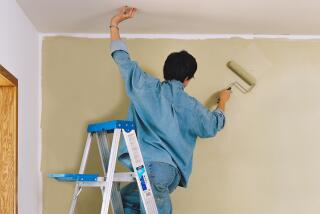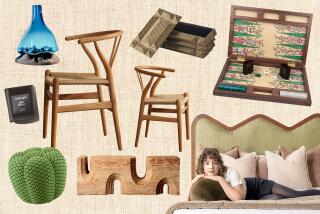We’re renovating more than ever. Here are 5 home improvement trends that don’t involve decluttering
- Share via
Chalk it up to the renovation mania spurred by home-improvement shows: Remodeling remains an unbridled pursuit, and homeowners are spending record amounts. But there may yet be a limit to all those rehabs and retrofits.
A review of that limit, and other renovation trends, comes courtesy of the Home Improvement Research Institute. The Indianapolis-based center, founded in 1981, bills itself as “the only nonprofit organization dedicated to home-improvement research.”
Remodeling activity will continue to be strong through 2021
Americans spend about $340 billion annually on home improvement and repairs after “meteoric growth” during the past five years, said Mark Boud, senior vice president and chief economist at Hanley Wood/Metrostudy, a Washington, D.C.-based media, marketing and data company.
That growth will continue for a few more years, but some experts forecast that our renovation binge will begin to level off after 2021.
Several factors prompt Americans to continually reimagine their homes: An aging housing stock requires upgrading, because existing houses now average 38 years old. Rising home prices and mortgage rates mean people are staying in homes longer. And the ease of qualifying for home-equity loans, along with record equity wealth, gives homeowners extra cash to remodel.
“California is a prime remodeling market,” Boud said — it makes more financial sense to stay and upgrade, rather than buy a new house with its attendant extra costs. But higher home prices, labor and materials all eat into renovation budgets. Homeowners are now more likely to spread out projects over time, rather than fix up everything in a single year.
Circadian rhythm lighting tops the home wellness trend list
You may be unfamiliar with obscure home trends such as hygge or cwtch; they both involve comfort. No matter. Circadian rhythm lighting is far easier to envision.
Humans’ internal clocks (24-hour sleep-wake “circadian” cycles) were once timed to natural light. Now, we spend 90% of our time indoors, eternally bathed in faux blue light that can sabotage sleep patterns. Smart home systems increasingly incorporate adjustable color-temperature bulbs that shift from daylight blue to golden-warm nighttime hues that help the body power down.
Higher-end products include the Darwin Home Wellness Intelligence Network ($3,500 and up), which features sensor-triggered adjustments for circadian lighting, as well as air and water filtration systems. Lower-end light systems include voice-activated Philips Hue, from $70. Or, just buy a circadian color switch bulb online, from about $8.
Security continues to reign in the home-tech field
“Home tech is booming in certain areas — anything to do with home security is massive right now: doorbells, security systems, cameras, garage door openers, lock sets …, ” said Grant Farnsworth, director of the Farnsworth Group, which manages the Home Improvement Research Institute.
Amazon bought video-enabled doorbell maker Ring in early 2018 for $1 billion, signaling a growing desire for such products.
“People want to feel secure and have peace of mind in their homes,” Farnsworth said.
Ease of use is crucial in the design of home security tech. Farnsworth cites the touch test: “Can I get this to function with just two touches on my phone?”
The rising popularity of online services
“As labor becomes more scarce, it’s a pain to get a contractor on the line or just to show up — they’re slammed,” Farnsworth said. Enter such online services as HomeAdvisor that connect homeowners with local service professionals — from architects to appliance repair specialists.
Such platforms are best paired with modest repair and improvement projects priced under $5,000, according to a 2016 Farnsworth Group study.
Paintzen, an on-demand residential painting service, is a prime example of the online service trend. Its website walks customers through a project questionnaire, then offers a quote and dispatches a local painting pro. The company, based in New York, quickly expanded from its 2013 launch in a few major markets to the 11 it serves today, including Los Angeles.
DIYers are more likely to be millennials
“The younger the homeowner, the more likely they are to be a DIYer,” Farnsworth said. “A few years ago, there was a lot of rhetoric in the home-improvement industry that DIY was dead, that millennials will expect others to do things for them — not the case.”
Millennials, however, are taking a more “hybrid approach to DIY activity,” he said. “They’re doing some of the work, but seeking a contractor to help out in certain aspects.”
Seemingly unlimited design options (Home Depot lists more than 6,000 faucet choices) allows the group (or anyone) to put unique stamps on homes. “You now have the world at your fingertips, from a creativity standpoint,” Farnsworth said.
More to Read
Sign up for Essential California
The most important California stories and recommendations in your inbox every morning.
You may occasionally receive promotional content from the Los Angeles Times.






